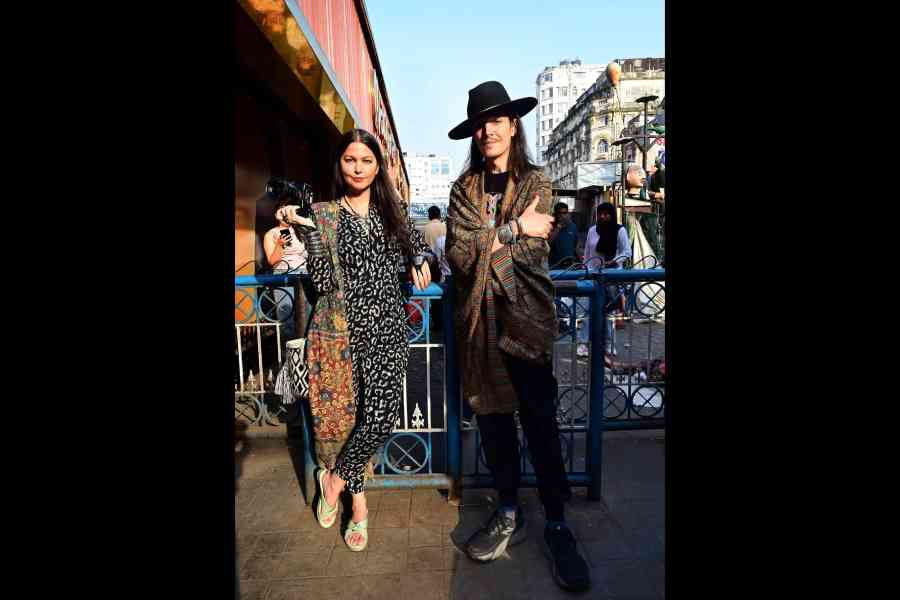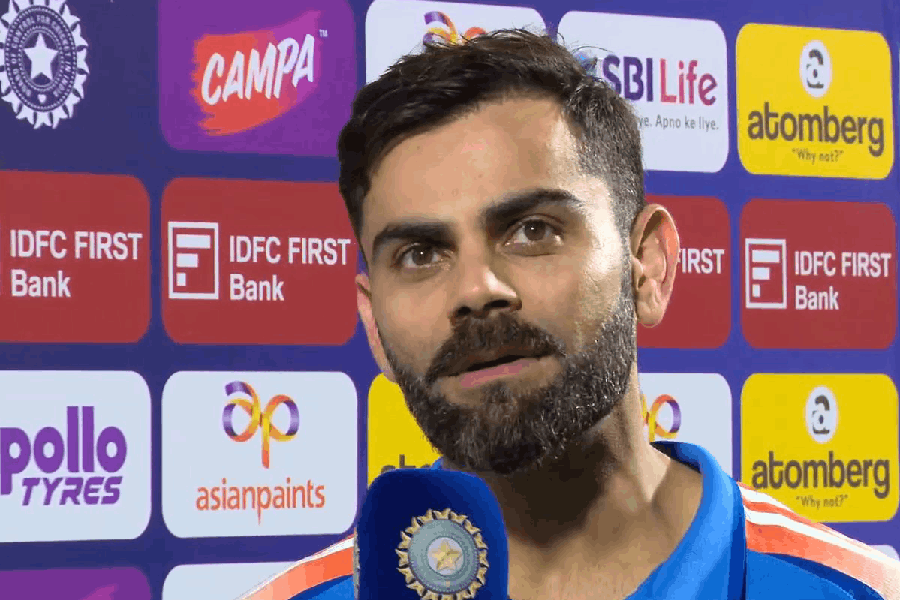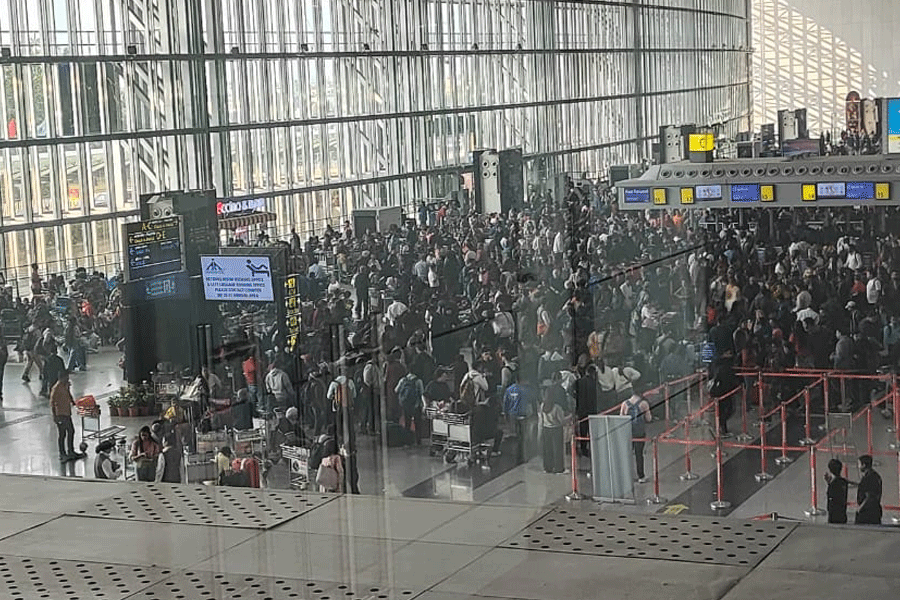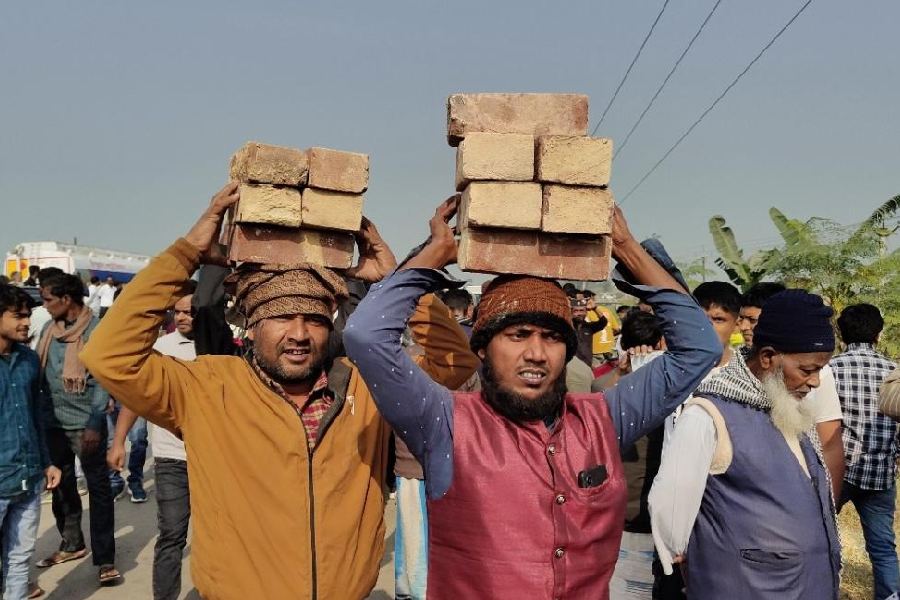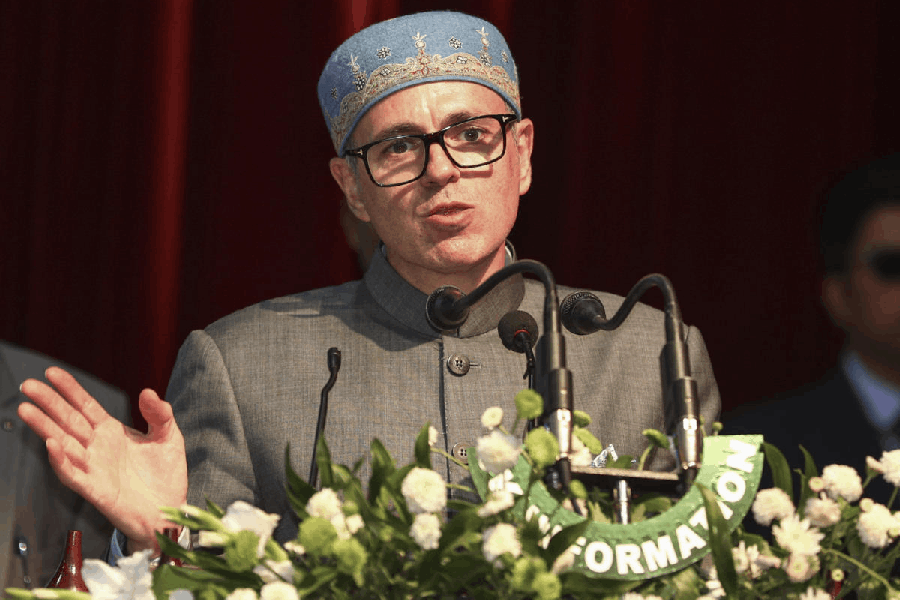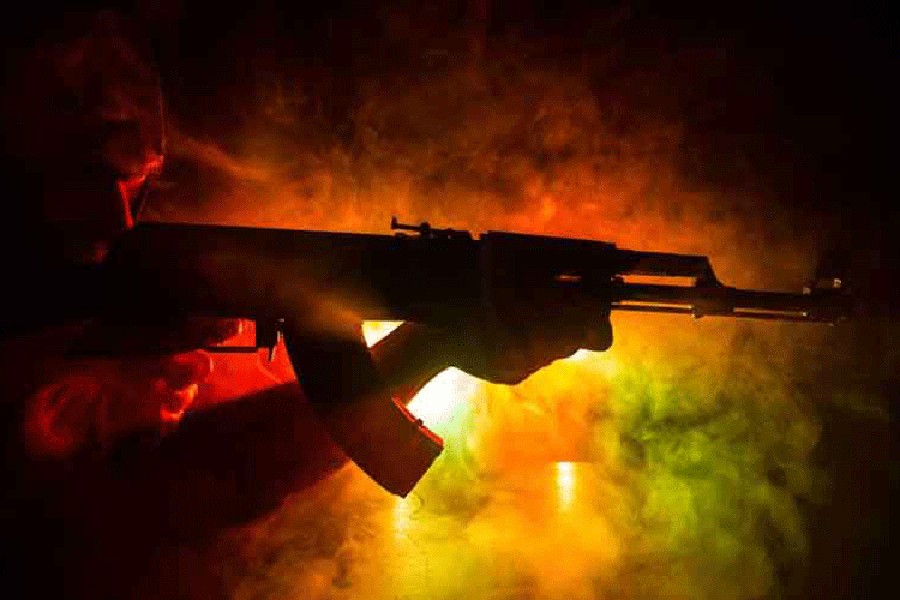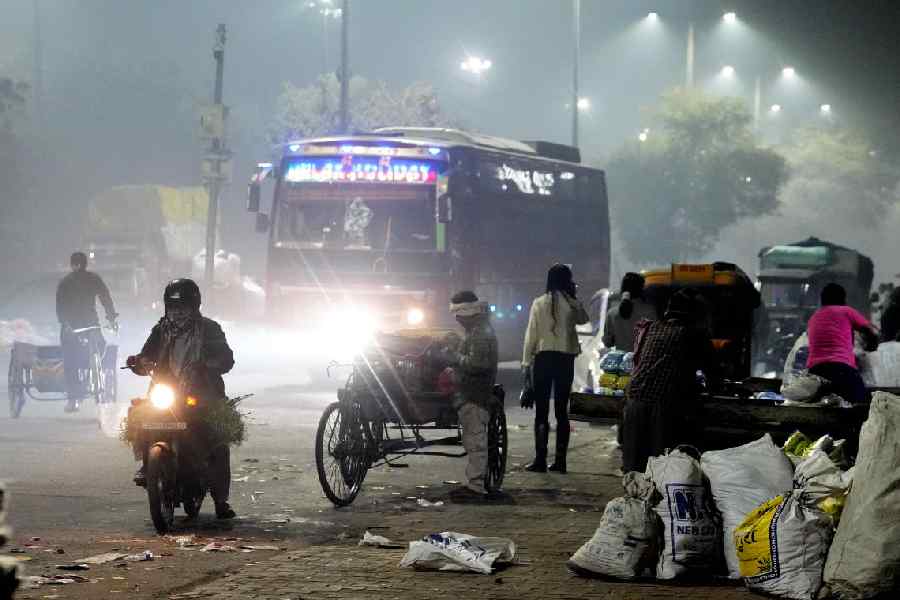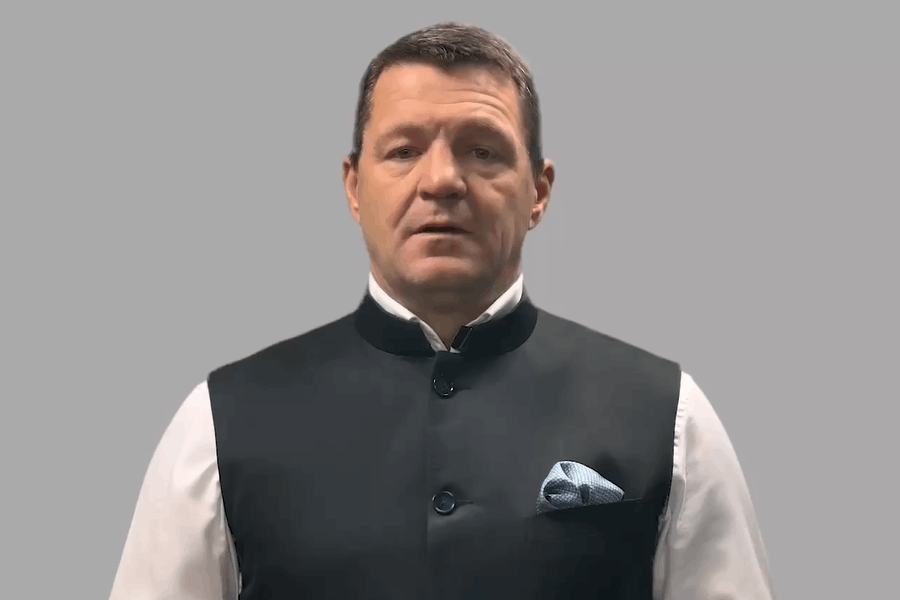American producer and stylist GK Reid and Canadian filmmaker and photographer IndraniPal-Chaudhuri led an engaging interactive session with fashion and interior design students at NIF Global Lindsay Street last month, highlighting the importance of sustainability in design.
As eager students absorbed every piece of wisdom the duo shared that afternoon, t2oS seized the opportunity to catch up with the two separately, on the sidelines of their session, on their journey of collaboration with some global icons, including the likes of Jennifer Lopez, Rihanna, Beyonce, Lady Gaga, David Bowie and a constellation of other luminaries.
Indrani Pal-Chaudhuri
As someone who works in both photography and filmmaking, do you find that the two art forms complement each other?
Photography and filmmaking require distinct mindsets. Photography is about capturing a single moment that tells an entire story, while film, for me, is about transformation — the evolution of a character over time —creating a completely different rhythm and flow. As an artiste, I see the creative process as much more than just photography or film — it’s about building companies, pioneering green energy, and driving transformative innovation. Through collaborations with visionaries like David Bowie, who have influenced far beyond the realm of music, I’ve come to understand that creativity isn’t just about reflecting the world — it has the power to reshape it.
With the rise of digital media and social platforms, how do you think the landscape of photography has changed, especially in terms of celebrity images and content?
For me, celebrity imagery has always been secondary to my work — I’ve always aimed to address larger issues. While fashion and celebrity are beautiful art forms, meaning often takes a back seat. With the rise of social media and platforms like Instagram, the superficial has largely overshadowed substance. However, I believe we now have an opportunity to refocus on deeper meaning and messaging beyond what is merely beautiful or trendy. Today, it’s less about celebrity itself and more about what a celebrity represents — a shift that feels more significant than ever before.
How do you approach working with celebrities who might have a distinct or challenging personal brand? Is it difficult to balance their expectations with your artistic aesthetics?
Absolutely, it can be quite challenging. Celebrities often have an entire team dedicated to shaping and protecting their brand, with commercial interests that need to be maintained. At the same time, they come to me because they want something fresh — they’re looking to evolve and expand their audience.
When I work with a celebrity, my goal is to help them grow, which can sometimes be a disruptive process. David Bowie once said that true transformation happens when you step out of your depth — when your feet no longer touch the bottom. I always strive to find that moment where we can push boundaries while ensuring their evolution feels natural and meaningful.
What has been your favourite experience of working with a star?
Oh, I’ve had so many incredible experiences. Working with Lady Gaga was extraordinary because she was so creatively open — always ready to take an idea and push it even further. She constantly asked, how can we make this more exciting, and brought her own brilliant suggestions to the table.
Working with David Bowie was equally remarkable. He was a true visionary, always thinking beyond the present moment and considering the lasting impact of his work on society. For example, my first music video starred Bowie and explored the mind of a school shooter. While most narratives focus on the victims, he wanted to examine the psychology behind such violence — not to justify or glamourise it, but to better understand its roots. He was deeply conscious of how art influences people, and that level of thoughtfulness made collaborating with him an unforgettable experience.
Is there a specific approach or technique you use to help your subjects feel comfortable and authentic in front of the camera?
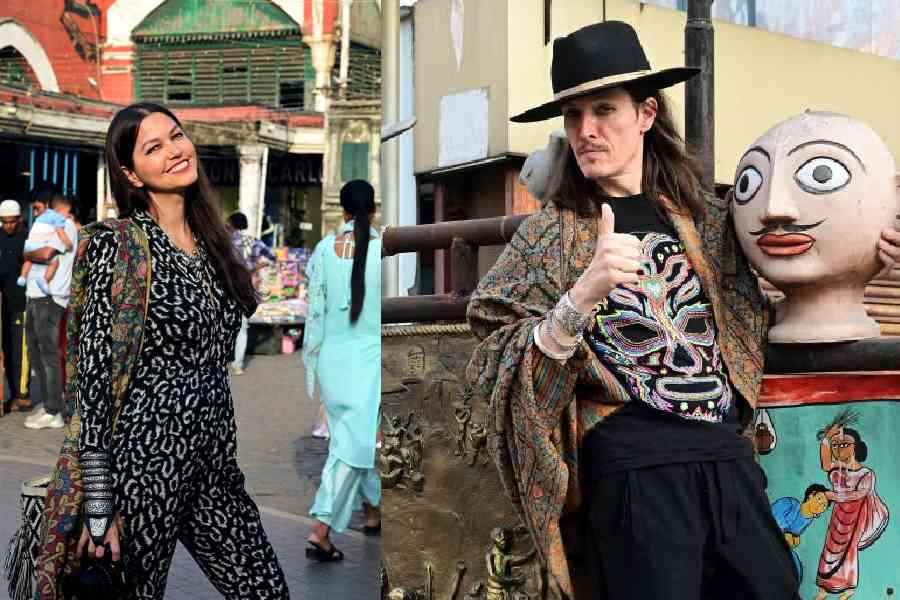
Yes, I believe authenticity starts with me. By being genuine myself, I create an environment where others feel safe to be their true selves. Many of the people I work with, especially when collaborating for the first time, can feel vulnerable. They often have more at stake — more to lose than to gain — so I focus on understanding their vision and how they see themselves. My goal is to create both a sense of security and an openness to explore new aspects of their identity and evolution. But at the heart of it, authenticity is everything.
What are some of the challenges of shooting in a high-pressure, celebrity-driven environment compared to other types of photography?
There are many challenges, primarily because multiple parties have different objectives for the shoot. There’s the client, the celebrity’s management team, and, of course, the celebrity themselves, who are considering both their personal brand and their audience’s expectations. A big part of my role is helping them connect their work with a meaningful cause — whether it’s supporting a non-profit or contributing to initiatives like the green transition. Often, this is a new perspective for them, but I encourage them to see that they don’t need to have all the answers. Instead, asking the right questions and guiding their audience toward positive change can have a significant impact.
How do you handle the pressures of the job?
I grew up in Calcutta, so I thrive in chaos. I love the energy and unpredictability of being on set — it’s where I feel most alive. There’s an exhilarating sense that anything is possible, and that excitement fuels my creativity. The pressure doesn’t get to me during the shoot itself; in fact, I find it energising. If anything, I feel more stress before or after — when I’m planning or working through post-production to bring all the elements together. But in the moment, I’m fully present, embracing the experience.
What has been the most challenging project so far?
The most challenging project is the one I’m working on now: The Regeneration Generation. Our goal is to shift global consciousness from extractive practices to regenerative solutions. The project itself reflects its name — the regeneration of both mindsets and ecosystems, particularly in the Amazon.
I’m directing the documentary, with GK as the producer, and what makes this especially challenging is that it’s not just a passive documentary. Traditionally, documentaries observe and record, but we are actively using filmmaking as a tool to unite people and drive real change. This project was initiated at the invitation of indigenous leaders in the Amazon, who are deeply concerned about the ongoing destruction and its impact on all of us.
The scale of this is enormous, but it’s also incredibly rewarding. We’ve connected with remarkable people worldwide — huge celebrities, world leaders, and policymakers. We’ve interviewed presidents and prime ministers who, despite what the media may portray, genuinely care and are making extraordinary efforts to create change. Many of these initiatives don’t get the attention they deserve, and part of our mission is to shine a light on these transformative actions.
Are there specific themes or subjects that you’re particularly passionate about capturing in your work?
Absolutely! I’m excited about the ways humans can transform, how we can grow stronger and more in tune with what’s best for our planet, especially from the environmental and ecosystem aspects. The green transition we’re all part of right now is central to my work. I love exploring how people contribute to positive change and finding ways to showcase those stories in a powerful, inspiring way.
You’ve had the opportunity to work with many global icons. How do you capture the true essence of a celebrity while maintaining their public persona?
That’s a really important question. There’s often a big divide between the public persona and who they are in private. Some like David Bowie or Lady Gaga often keep a very separate sense of identity while others, like Beyoncé, fully integrate who they are with what they want to pursue — their identity into their work. As an artiste, my approach is to align with what they want to present — whether it’s a carefully crafted persona or a more personal, raw side of themselves. My role is to help bring that vision to life in the best powerful manner. I believe that who people are is always the most exciting part, and that’s where the connection comes between an individual and the audience.
What is the most interesting or unexpected thing you’ve learned about celebrities during your collaborations?
I have learned that celebrities are just like everyone else. They have fears, they have hopes, they have dreams, and they are often very sensitive. So when the public has a lot of great things to say about them, that can be very overwhelming, just as much as when they’re receiving negative feedback. So it’s very important to realise that each of us has enormous potential, and that a celebrity is just a human who has reached a larger audience through their work.
What’s the most rewarding part of your work? Is it the photography process or seeing the final result come to life on screen?
For me, the most rewarding part is the process — getting to know someone, understanding what makes them who they are, and then, of course, seeing the audience response to the work — that’s exciting. But especially in filmmaking, that can take years. I enjoy every moment of creation because that’s the part I can
GK Reid
You’ve been described as a ‘Renaissance man’ for your diverse work across fashion, film, music, and social justice. How do you navigate such a multifaceted career?
I guess I do that with a combination of deep curiosity, constant learning, and active listening. I do a lot of reading and a lot of listening. I read extensively, engage with different perspectives, and approach every project with a deep respect for the complexity of the world we live in.
From styling icons like Lady Gaga and Rihanna to working with luxury brands like Louis Vuitton, what is your creative process when designing for such diverse projects?
My goal with each artiste is to bring out their most authentic self and amplify the aspects they want to put out in the world. Sometimes, this aligns exactly with their vision, it’s exactly who they thought they wanted to put out there and at other times, I help them explore facets of themselves they may not have considered. It’s about highlighting what feels true to them while also tapping into elements that will resonate with their audience in fresh and exciting ways. My goal is to enhance their vision rather than impose my own.
You’ve styled some iconic fashion looks. Do you have a personal favourite?
There have been a lot of really amazing opportunities that I’ve had to create for people, but one of my favourites has to be a dress I designed for Daphne Guinness. I crafted it from 990 titanium scales and called it the Dragon Scale Dress.
Your work has shaped the visual identities of artistes like Beyoncé, Jennifer Lopez and many more. How do you balance their personal style with your creative input?
For me, collaboration is key. I feel it’s really important to collaborate with an artiste; I put in a lot of research but I also have a lot of instinctual energy that goes into what I do. It’s about understanding who they are, how they see themselves, and finding ways to reflect that authentically — while also pushing creative boundaries in a way that feels natural to them.
Can you share a memorable behind-the-scene moment from working with one of these global stars?
We were working on one of Rihanna’s album. We had a moment when she was wearing this stunning ball gown, and the photographer and I thought, wouldn’t it be amazing if she were in the pool? So, we went for it. And the dress started to get wet and became incredibly heavy. It was really kind of frightening for a moment. Things went from a brilliant fashion moment to something a bit dangerous. You just never know what’s going to happen, but just being conscious of what’s happening so that there aren’t any accidents. It was one of those behind-the-scenes surprises where you realise how quickly things can shift. In fashion and photography, things can be both magical and unpredictable.
You’ve worked with some of the most legendary photographers and directors, including the likes of Mario Testino, Peter Lindbergh and many more. How have these collaborations influenced your artistic vision?
It’s the process of creating an image or film that is deeply collaborative, and working with passionate, experienced artistes pushes me to grow and evolve. These collaborations challenge me to step outside my comfort zone, embrace creative risks, and bring a sense of drama, intensity, or unexpected energy to my work.
Fashion is often an extension of storytelling, especially in music videos and films. How do you use styling to enhance the narrative?
Fashion is one of the first things we notice about a person — right after their eyes and micro-expressions. It’s a powerful tool for storytelling because it can communicate so much without a single word. In any society, what we wear can reflect who we are, where we come from, where we want to go, or even what we’re trying to say.
That’s what makes fashion so fascinating — it’s a silent language that can speak volumes or whisper subtly, depending on how it’s used. When styling for a project, I think about how clothing can shape a character’s presence, mood, or message. It’s about creating a visual identity that enhances the story, whether it’s bold and dramatic or understated and nuanced. Fashion is this constant, ever-evolving form of self-expression, and that’s what makes it so exciting to work with.
You’ve not only worked in high fashion but have also used it as a platform for social causes. How do you merge fashion branding with activism?
I’ve been diving deeper into researching the brands I work with — understanding their missions, values, and whether they truly align with the causes I care about. Finding the right partnerships is crucial because the fashion industry is such a complex web — how things are made, where materials come from, and the impact behind it all. When a brand is transparent and genuinely committed to positive change, it makes it easier to create meaningful collaborations that go beyond aesthetics and actually drive awareness and action.
The fashion industry is increasingly discussing sustainability. What role do you think designers play in this movement?
Designers have a huge role in driving sustainability and regenerative design, but consumers play a big part too. It’s not just about creating eco-friendly collections — it’s about rethinking the entire system, from sourcing materials to production methods and waste reduction. At the same time, consumers need to be more engaged in what they’re buying, asking questions about where and how things are made. The more awareness there is, the more pressure there is for real change. It’s a shared responsibility, and both designers and consumers have the power to shape a more sustainable future.
You have worked with Bengal weavers. Could you tell us a little about that experience?
Working with the weavers was incredibly inspiring. Their dedication, attention to detail, and deep love for their craft as artisans were truly energising. Seeing their commitment firsthand gave me a whole new appreciation for the artistry behind handloom textiles.
Calcutta is rich in cultural heritage. How have your visits to this city influenced your perspective on Indian fashion and craftsmanship?
Calcutta is a magical city to me — there’s a unique energy here, like time moving in different directions at once. The beauty of the city, its people, the colours, and the light have been a huge source of inspiration. What excites me most is the incredible potential I see everywhere — the artisans, the evolving architecture, and the ways the city is growing while staying connected to its heritage.
Do you see potential for Indian textiles and craftsmanship on the global stage?
Absolutely! Indian textiles are some of the finest in the world, and there’s a huge global demand for this kind of craftsmanship. The artistry, heritage and skill behind Indian textiles make them incredibly unique, and I believe they have the potential to thrive internationally. I’m especially excited to see Calcutta tap into this growing interest and showcase its rich textile traditions to the world.
You come from a lineage of healers. Does that spiritual background influence your work in any way?
Yes, absolutely. My mother, who is a healer, has been a huge inspiration to me. I also draw inspiration from other healers I’ve encountered around the world. When I create, I try to carry that same sense of intention and respect — approaching my work with mindfulness and a deeper purpose, ensuring that what I make is infused with positivity and meaning.
Are there any upcoming projects or collaborations that excite you?
There are so many! Right now, we’re especially excited about finishing The Regeneration Generation, our rainforest film. It’s a deeply meaningful project because healing our planet is more urgent than ever. Throughout this journey, we’ve met so many inspiring people, all working in different ways to help restore nature, and that’s really shaped my perspective.
This experience has also sparked new ideas for fashion — ways to create in closer harmony with nature and collaborate with artisans around the world. I’m excited to see how these ideas evolve and how we can help bring more recognition to these incredible craftspeople.
Your background is fascinating — from growing up in an artist’s community in New Mexico to sword fighting and spending time in Amritsar. How has this shaped your career?
India has always felt like a second home to me, even though I’m not Indian. I grew up here for part of my childhood, and every time I return, I feel a deep sense of peace and connection. The warmth and hospitality of the people have always made me feel welcome, even as an outsider. I’ve lost count of how many times I’ve visited, but each time, I leave feeling inspired, energised, and grateful for the time I get to have here with its people and the lessons I continue to learn here.

